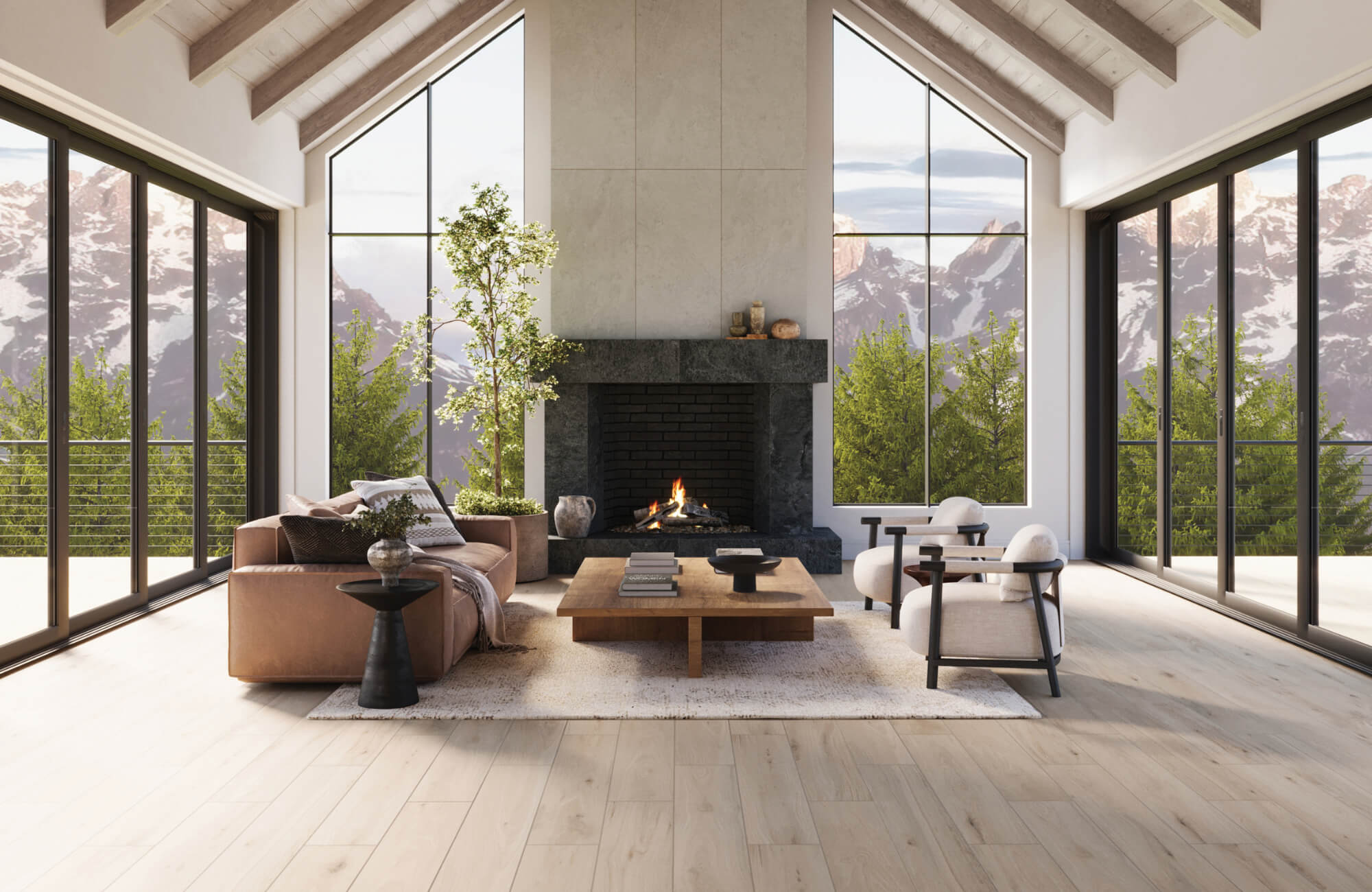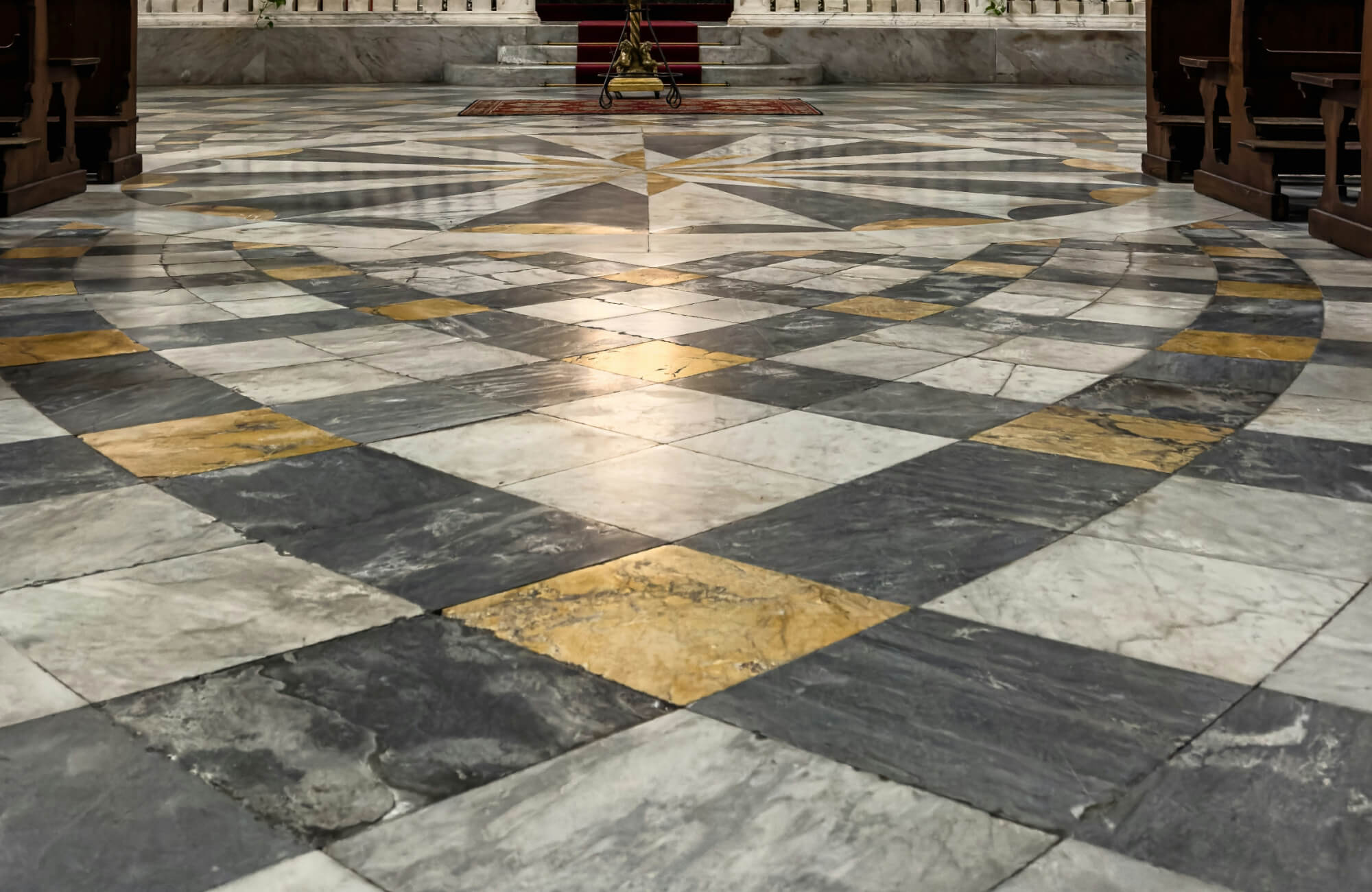Marble has long been celebrated for its elegance and luxury, making it a popular choice in bathroom design. Its distinctive veining and cool, smooth surface can transform any bathroom into a spa-like retreat. From ancient Roman baths to modern high-end homes, marble continues to symbolize sophistication and timeless beauty.
However, the allure of marble must be balanced against practical considerations. As a natural stone, marble is porous, prone to staining, and requires significant upkeep. This article will explore the pros and cons of using marble in bathrooms and suggest alternatives, such as marble look tiles, that offer similar aesthetics with greater durability and lower maintenance.

The Enduring Allure of Marble
Marble has long been valued for more than just its appearance, as it carries a sense of craftsmanship, culture, and quiet luxury that few materials can match. Whether you're restoring a classic home or shaping a modern retreat, marble offers a depth of character that elevates the entire room. Its natural variation, historical roots, and ability to adapt to different design styles also make it a thoughtful and rewarding choice for any bathroom.
A Material Steeped in History
Because it leaves a lasting impression, there’s a reason marble has been used for thousands of years. From the grand villas of ancient Rome to the ornate cathedrals of the Renaissance, it has long been tied to craftsmanship, culture, and beauty. Even now, its presence speaks to something enduring. When you choose marble for your bathroom, you’re not just adding a finish, you’re also bringing in a layer of history that continues to inspire. It’s a subtle way to add depth and dignity, giving your home a touch of timeless sophistication that feels authentic, never artificial.
Modern Appeal and Design Impact
While marble has deep historical roots, it hasn’t lost its edge in modern design. Its ability to blend tradition with trend makes it more relevant than ever. The natural veining and subtle variations also bring a sense of luxury that feels effortless, not overstated. Whether you're drawn to the soft elegance of classic white Carrara or the bold drama of Calacatta Gold, marble moves easily between design styles, from clean minimalism to rich, layered maximalism. In smaller bathrooms, its reflective surface can make the space feel brighter and more open. More than just a material, marble also helps shape the room’s entire atmosphere.
Different Marbles, Different Vibes
What makes marble so special is that no two pieces are ever quite alike, and that’s a big part of its appeal. Each variety brings its character to the space. For example, Statuario features bold, dramatic veining that immediately draws the eye, while Thassos offers a soft, luminous quality, perfect for creating a calm, spa-like atmosphere. Choosing the right type of marble isn’t just about color or pattern, it’s about setting the tone for the entire room as well. That’s why it’s worth selecting a style that reflects your vision, rather than following what’s currently trending.

The Realities of Using Marble in Bathrooms
Marble may look effortless, but living with it tells a different story. Beneath its polished surface are qualities that anyone planning a bathroom should understand before making a decision. What feels luxurious at first glance can come with practical challenges that affect how the space works in everyday life. That’s why it’s worth looking closer, not just at how marble looks, but also how it lives.
Sensitive to Stains and Acids
Marble may be stunning, but it’s far from indestructible. As a naturally porous material, it can easily absorb moisture, oils, and other substances if it’s not properly sealed. Over time, even everyday items, like toothpaste, shampoo, or citrus-based cleaners, can lead to etching or dull spots on the surface. Because of this, marble requires a little extra care to keep it looking its best.
Fortunately, if you're drawn to marble's elegance but prefer something easier to live with, porcelain marble look tiles such as Edward Martin’s Astrid 24x24 Matte Porcelain Tile in Pearl offer a smart, stress-free option. With their non-porous surface, they naturally resist stains, acids, and moisture without needing sealing or special treatment. As a result, they’re an ideal choice for anyone who wants the refined look of marble with far less maintenance and worry.
Comfort and Care Considerations
Stepping onto marble feels cool and smooth underfoot, which can be especially refreshing in warmer climates. However, in colder months or cooler regions, that same coolness might feel less inviting. If comfort ranks high on your list, underfloor heating is worth considering to keep things cozy year-round. When it comes to maintenance, marble isn’t necessarily demanding, but it does have its preferences. Gentle care is key; steer clear of abrasive pads and harsh cleaners, and instead opt for pH-neutral products that preserve its natural beauty. So, if you prefer materials that require little thought after installation, marble may need a bit more attention than you’re used to.
Environmental Impact
Marble is a natural material, but that doesn’t automatically make it eco-friendly. Extracting and transporting it requires significant energy, and its environmental impact can vary depending on where and how it’s sourced. If sustainability is part of your decision-making, it’s worth taking a closer look. Some quarries follow more responsible practices than others, so asking about the stone’s origin, mining methods, and any environmental certifications can also help you make a choice that aligns with your values and design goals.

Is Marble Worth the Investment?
Marble brings undeniable beauty, but that elegance comes with a price, upfront and over time. Before leaping, it's worth weighing the financial and practical sides of using it in your bathroom. From installation costs to long-term care and how it affects resale potential, understanding the full picture can help you decide whether marble truly fits your budget and lifestyle.
What You’ll Spend Upfront and Over Time
When it comes to cost, marble starts at the higher end of the spectrum. Between the price of the material itself and the skilled installation it requires, including proper sealing, it quickly places itself in the premium range. The initial spend is only part of the story. Over time, maintaining marble also means committing to a routine such as periodic sealing, using gentle, stone-safe cleaners, and occasionally polishing to keep it looking its best. It’s similar to owning a tailored garment; it holds up beautifully, but only if you give it the attention it deserves.
Resale Value vs. Practical Value
In real estate, marble tends to catch the eye. It signals thoughtful design and an investment in quality, which can boost a home's overall appeal. However, resale value isn’t based on appearance alone. If the marble shows signs of wear, staining, or damage, it can just as easily leave a negative impression. That’s why it’s important to weigh practical value alongside potential returns. The real question is: how well does it serve you day-to-day? A surface that looks stunning but requires constant upkeep may not align with a lifestyle that values ease and efficiency.

Smarter Alternatives with the Same Appeal
If you’re drawn to the look of marble but hesitant about the upkeep or expense, there are plenty of great alternatives worth considering. Advances in tile design and manufacturing have made it possible to achieve the same high-end aesthetic with materials that are easier to maintain and more budget-friendly. Let’s explore the top options that deliver style without the usual trade-offs.
Porcelain Marble Look Tiles
Porcelain tiles that mimic marble have come a long way, and the results are impressive. With high-definition printing and refined textures, today’s porcelain options can replicate the veining, depth, and soft glow of natural marble with remarkable realism. Even better, they offer practical advantages that marble simply can’t match. Porcelain is highly resistant to moisture, stains, and scratches, making it an ideal choice for bathrooms that see daily wear. And because it doesn’t require sealing, you’ll spend far less time on upkeep, giving you the look you love without the added work.
A perfect example of this balance between style and function is Edward Martin’s Aniston 24x48 Matte Porcelain Tile in Calacatta Antico, as displayed in the photo above. Its sweeping grey veining on a warm white base captures the refined look of classic marble while offering the durability of modern porcelain. In this space, it sets a luxurious tone from floor to wall, seamlessly tying together elegance and everyday practicality.
In addition, porcelain mosaics like Edward Martin’s Aniston 2x2 Matte Porcelain Hexagon Mosaic Tile in Calacatta Cremo pair beautifully with larger format tiles, particularly in wet areas like showers or around tubs. With a matte or textured finish, these smaller tiles provide added grip underfoot, making them a smart and safe choice for slippery surfaces. At the same time, they also preserve the cohesive look of marble-inspired design, effortlessly blending practicality with elegant style.
Ceramic Marble Look Tiles
Ceramic is another strong alternative for achieving the marble look, particularly when you want style without the higher material cost. While it’s most commonly used for walls, since it’s lighter and can chip more easily under heavy floor use, it still delivers plenty of visual appeal. Ceramic tiles are simple to maintain, resist mildew, and are available in a wide variety of finishes, allowing for flexibility in design.
If you’re after a stylish option that’s easy to care for, ceramic tiles like the Julianna 4x12 Glossy Ceramic Tile in Carrara are a smart choice, especially in smaller bathrooms or powder rooms where the demands are lighter and wall design plays a leading role. Another beautiful option is our Kendrick 4x12 Glossy Ceramic Tile in Sand, which brings warmth and subtle texture to your walls while delivering a polished look that complements both classic and modern spaces.
Transform Your Bathroom with Style and Practicality
A great bathroom should do more than just look good; it should make everyday life easier. That’s where style and practicality come together. With the right materials, you can create a space that feels polished and inviting, while also being durable and easy to maintain.
Marble look porcelain and ceramic tiles are the perfect example of that balance. They capture the timeless elegance of natural stone, yet offer the everyday convenience of surfaces that resist moisture, wear, and stains.
Picture a calming, spa-inspired retreat where large format marble look porcelain tiles stretch across the floors and walls, creating a seamless and spacious atmosphere. A walk-in shower, outlined with smaller textured tiles, adds both visual interest and slip-resistance. Behind the vanity, a feature wall with gentle veining introduces just enough contrast to catch the eye without overwhelming the space. Soft lighting, clean-lined fixtures, and warm accents complete the look, uniting modern elegance with everyday comfort.
If you're wondering how it will look in your own home, AR tool makes it easy to preview tile options in your space, so you can move from vision to reality with confidence.
In the end, it’s not about choosing between beauty and function; it’s about bringing them together. With thoughtful choices and a clear vision, you can build a bathroom that works hard, looks great, and feels just right every time you step inside.
Final Thoughts
Marble can bring timeless elegance to a bathroom, but it requires consistent care and suits those willing to maintain its beauty. For a more practical yet stylish option, ceramic and porcelain marble look tiles offer similar visual appeal with easier upkeep, greater durability, and long-term value. Ultimately, the best choice is the one that aligns with your lifestyle, design preferences, and commitment to maintenance. Whether you're renovating a guest powder room or designing your dream ensuite, balancing beauty with practicality is key. With so many high-quality options available today, it’s easier than ever to create a space that’s both stunning and sensible.
If you’re ready to explore your options or want help choosing the perfect tile for your space, feel free to contact us. Our team is here to guide you every step of the way!








